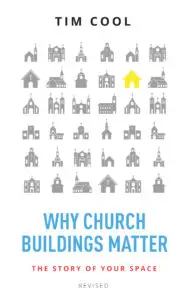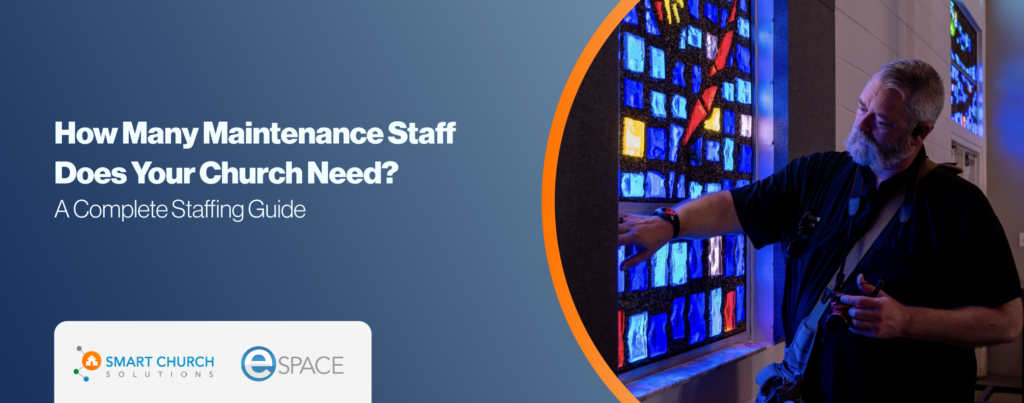The below are 9 “diseases” that many church facilities suffer from. Gary Nicholson, church architect, developed this list and thought you would enjoy playing doctor to diagnose if your facilities suffer from any of these ailments.
Enjoy (and thanks Gary, good stuff)!
Diseases of the Church Facility
Just as our bodies contract diseases that can lead to problems and cause pain and discomfort, many diseases can infect church facilities so that the church can experience functional problems and great discomfort. Rarely are these merely cosmetic, but are often outward signs of much more deep seeded problems. Examples include:
- Growing Pains– Consistently filling of a space or spaces in the church to beyond eighty percent, often a positive sign of growing numbers in a church. If not addressed, can become a limitation and lead to stunted growth. The remedy is not always to build new space, but to examine the possibilities of a.) Redistributing the people into underutilized areas, b.) Utilizing the space in an additional session at a different hour or time slot, or c.) Considering adding space that allows for future growth.
- Bumpus Maximus– When too many people are in your church foyer or lobby. This occurs primarily between services and Bible study sessions. Made worse when the preacher doesn’t stop preaching on time and people are waiting in the foyer to get into the next service when the previous service is not yet over, so that people are exiting the worship center at the same time others are trying to enter (Can be made even worse when the entire congregation ate nothing but beans the night before at the annual world hunger banquet).
- Circulatory Disease– When hallways and corridors are clogged or jammed full of people so that movement becomes difficult. Worst in cases where multiple services are occurring so that there is traffic both coming and going in the halls at the same time. Easily rectified by a good church squabble to thin the flock and reduce the numbers, leaving only the few who will not leave regardless of the dysfunction in the fellowship.
- Architectural Senility– A rather sad state whereby antiquated facilities relate to the past much more than the present. Can take on many forms. One often cited example is extremely small rooms designed for adult Bible study groups of 6-8 people instead of today’s larger groups, or built for activities that never materialize, like a recreation facility that no one uses. Another example is a very small platform with room for piano and organ and no other instruments because that was the way church was done in the 1950’s.
- Flashback Syndrome– The visual state of a room that induces instant flashbacks in a person who enters, usually to the 1970’s or some other era, by the nature of the color scheme and patterns, such as shag carpet with harvest gold, or avocado green color schemes. Symptoms may also include floral wall paper, or garish plaids and mauve color schemes from the eighties, etc. Communicates that the members are out of touch with the present, or simply do not think church is important enough to bother updating the environment.
- Architectural Vertigo– When a church facility has been designed with no sense of balance such as between the spaces allotted for areas such as building a huge worship center without regard for the space to balance it with children’s program space, or building without adequate parking. The result is often the communication of an unintended message such as: Bible study is not important, or even that we don’t care about kids.
- “Scatter brain” Syndrome (scatterus incognito)– A common ailment where the various age groups and programs are not arranged in any logical order and finding the appropriate room becomes extremely difficult for new or infrequent attendees.
- Religious Edifice Confusionitis– When a congregation builds using architectural styles or trappings from a different religion while declaring it to be “the way a church ought to look.” Greek and Roman temple forms used in nineteenth and twentieth century church buildings are often confused as “Christian”, when actually they were created as tributes to ancient gods like Aphrodite and Zeus. Makes people wonder if you know why the church even exists.
- Pave-it-all Landscapeosis– A disease often seen in churches that have taken the desire for a low-maintenance landscape plan to the ultimate level. Everything (except the cemetery) is paved. Asphalt has replaced the grass all the way up the building with no room for landscaping because, well, that’s the point: They don’t want to have to maintain a landscape. It has an unattractive appearance, but at least it they don’t have to do anything to take care of it.
Infected with one or more? The cure can be a lot of hard work, but so worth the effort to be free of such maladies and able to function as a church should. I recommend diagnosis by an expert in church facility diseases. Give us a call! Your facility, staff and congregation will thank you!








